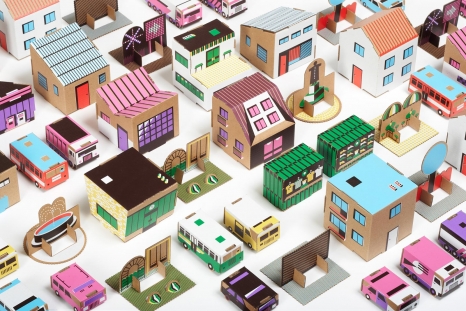
Dziecinada - Polish design for children
October 20-30, 2011
curator: Agnieszka Jacobson-Cielecka, coordinator: Monika Kuraś
co-organizer: Lodz Art Center, venue: Festival Center Targowa 35
Another installment of the Dziecinada exhibition as part of Łódź Design Festival 2011.
The exhibition “Dziecinada” is a presentation of works by Polish designers designed for the youngest audience. Cuddly toys, building blocks, lamps and furniture for toddlers. Some individual, unique, one-of-a-kind, others duplicated in short series or industrially produced. The objects presented at the exhibition escape the stereotypical thinking about toys and objects for children. They challenge convention, discuss with the viewer, provoke questions and play. They force, as it were, a dialogue between adult and child. While teaching, they entertain.
Designers:
Agnieszka Kwiecinska (Miuki) / Katarzyna Herman-Janiec (Protein design) / Ewelina Tymoszewicz (Aunt Zoya’s wooden toys) / Bajo / Barbara Mazur (Malina’s Rag Dolls) / Dorota Kuran (Rag Dolls) / Marta Hryniak and Agnieszka Niezgoda (Laloushka Dolls) / Robert Czajka (Paper City) / Łukasz Wysoczyński / Farida and Krzysztof Dubiel (Three Mice) / Maya Ober, Marta Florkowska-Dwojak, Magda Juszczak, Dorota Kabała (Knockout)/ Natka Luniak (Kalimba) / Iwona Kosicka (Simple) / Izabella Gkagkanis (Gagani) / Magdalena Jakubowska-Miąsek (Boska’s Teddies) / Oskar Zięta / Zofia Strumiłło-Sukiennik, Anna Loskiewicz (Beza project) / Barbara Lewandowska / Ziemowit Kalin (Eccolo) / Anna Żelazowska (ALELALE)/ Maja Ganszyniec, Rita Suchocka (Bellamy).
Girls in pink and boys in blue
Girls love dolls, and boys love cars. Common patterns didn’t come from nowhere, but does that mean we have to push our children into them before they discover for themselves what they like best? What we serve them should open them up, stimulate them, attract them. What they learn now, in childhood, is their baggage for life. Shaping the next generation is a responsibility. And this is precisely the task of a designer for children. He has to ask himself many questions. To go back to his own childhood. Recall what entertained him and what didn’t. To understand why. And make use of it.
Designers go different ways. Some rely on intuition. When designing, they have fun. This is how the individualized teddy bears of Kalimba, Izabella Gkagkanis, Boska’s, Alelale are created. It’s easy to hug such a toy, no fear of losing a teddy bear’s eye. After all, you can sew a new, different one from an enchanted button found on a walk. Others, like Three Mice or Ziemowit Kalin, think educationally and educationally. Their toys develop skills, teach spatial thinking, planning, patience. They entertain adults and children in equal measure.
Anyone who designs for children must watch them carefully. The objects that will occupy them do not have to be complicated. A table covered with a blanket, a pile of cushions, a few balls, inflatable swimming wheels. The cushions can be used to make seats or a great hiding place or hat. To tame the balls you can make peas, like Basia Lewandowska. Oskar Zięta’s inflatable Ploop stool wasn’t created with children in mind, yet it’s one of the few times when downsizing an object to childish proportions has yielded good results.
We talk to children about architecture and design. It’s good if they learn what we like. It’s worth using words: pretty, interesting, smart, funny, nice, difficult, ecological… It’s worth explaining why. It’s worth asking and listening to what children answer us.
Agnieszka Jacobson-Cielecka